Bay trees are pretty low maintenance. In addition, their leaves have a variety of uses in the kitchen. But over time, the tree can get too big. What can you do about it? We researched the topic, and these are our findings.
If you are concerned that your Bay tree is getting too big, you can address this by pruning it. Trimming minimizes your exposure to storm damage, which would occur if the tree's branches break.
Maintaining your Bay tree promotes its health, keeps your family safe, and protects property. Read on to learn how you can reduce a Bay tree's size. We will also address ways to care for a Bay tree in the winter and how to treat yellow leaves on a Bay tree. So, let's get right in.
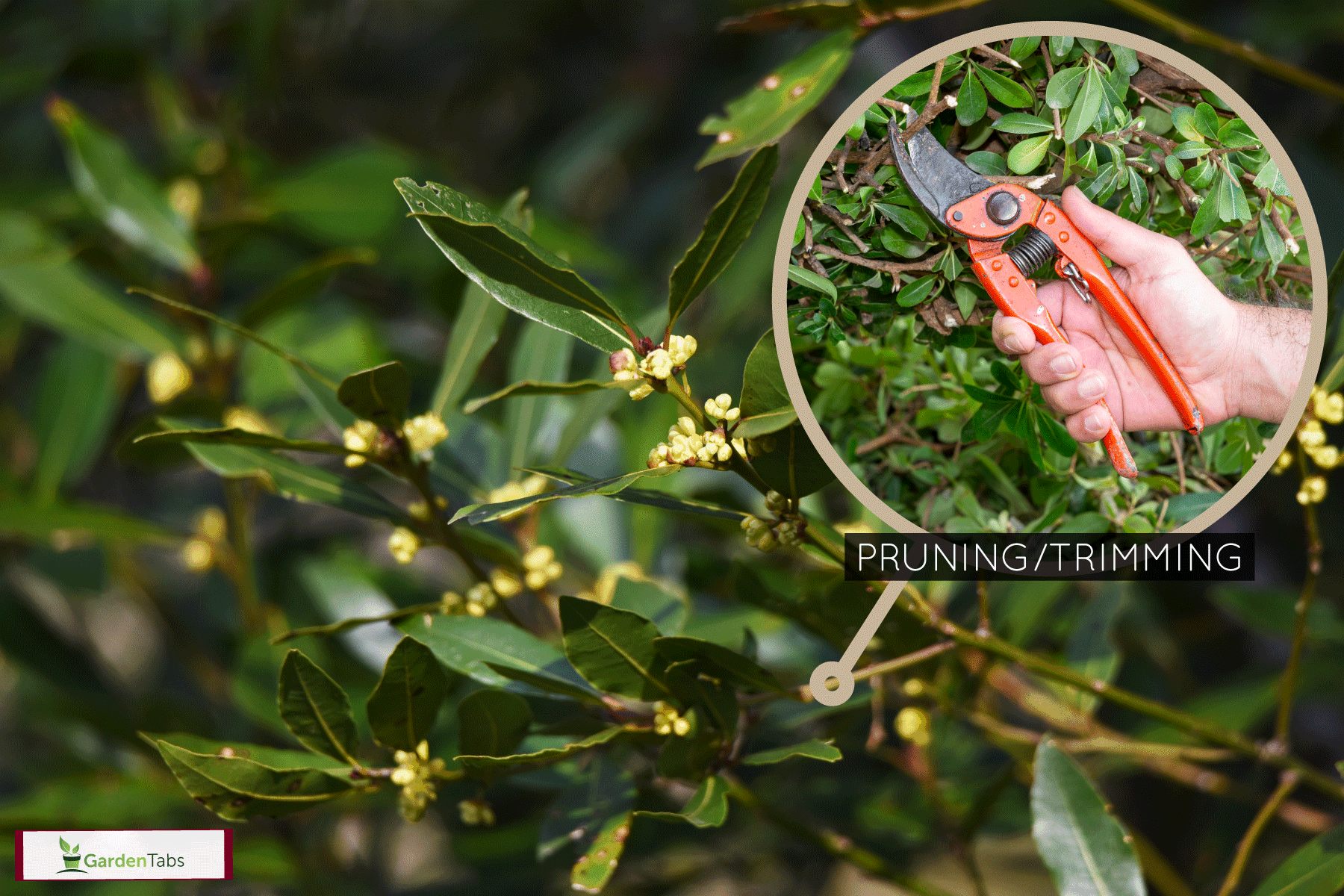
How Do You Reduce the Size of a Bay Tree?
Bay trees supply us with aromatic leaves that we use to prepare dishes like soups and stews. You can use the leaves when they are fresh or dry them for storage.
Although Bay trees are slow growing, they may eventually outgrow the spaces where they are planted if you do not interfere with their growth. This may raise concerns that the tree is getting too big.
Risks Linked to Big Bay Trees
Overgrown trees pose various risks. If the tree has low-hanging branches, you face the peril of accidental collision and poor visibility, especially in stormy weather. The risk increases if the branches lean over your neighbor's yard or a pedestrian walkway.
The overhanging branches in big trees are a safety hazard. Although these branches do not seem dangerous when the air is still, they can cause significant property damage when the storm hits.
Bay trees have multiple stems that form a thick green pyramidal canopy. This dense canopy increases the chances that the swamped tree will fall when strong winds whip through it.
Furthermore, the dense canopy mars your ability to spot branches with weak connections or dead branches. Thus, the branches may eventually fall off, resulting in injury or property damage.
Thick Bay tree branches can create a good hiding spot for pests like snakes or opossums. If these branches extend toward your home, they create opportunities for pests to invade your home.
Pruning the Bay Tree
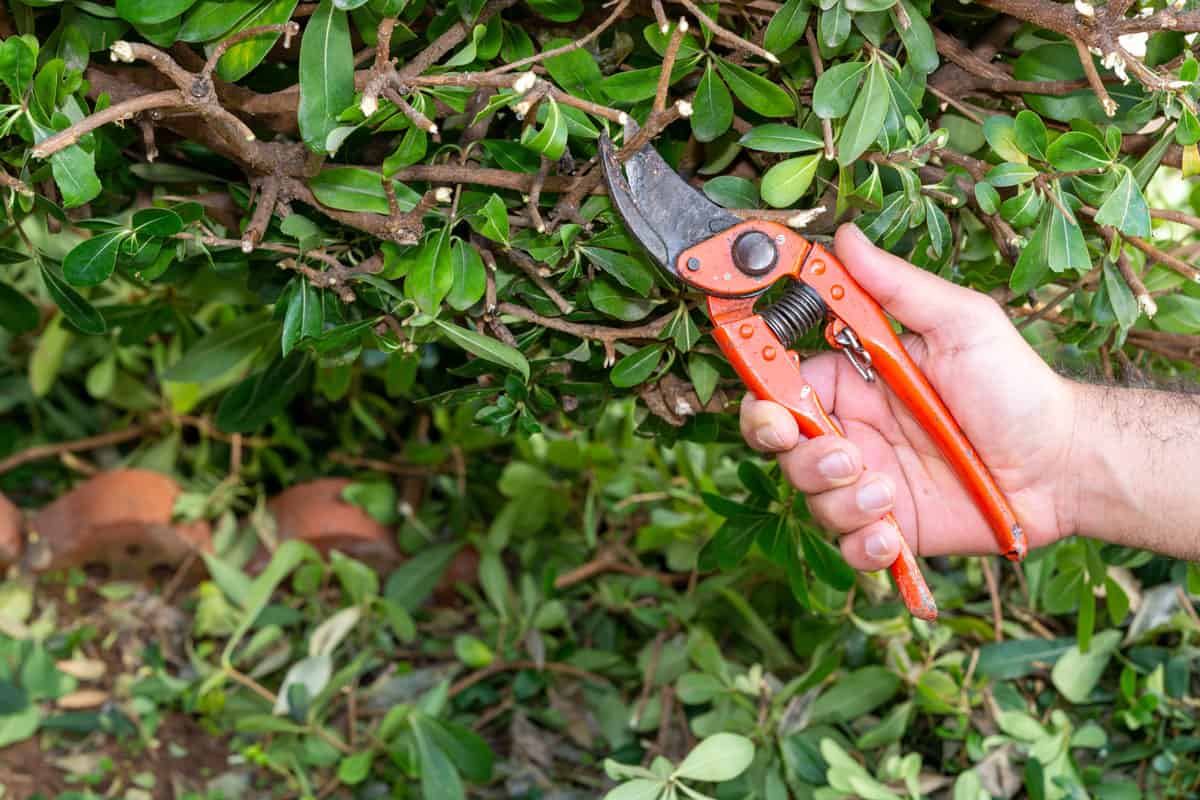
Pruning is beneficial for both young and established Bay trees. By setting a regular trimming schedule, you minimize your exposure to injuries or property damage if the branches fall off.
Pruning promotes the overall health of your Bay tree. As you eliminate the diseased branches, you create more room for new growth.
When the Bay tree becomes too big, some branches may fail to receive sufficient sunlight. Consequently, these branches die. So, pruning ensures that all the branches get enough sunlight, thus enhancing branch health.
You can also prune the tree to enhance its aesthetic appearance by keeping it proportioned and dense. As you engage in this exercise regularly, you sculpt the desired outlook.
These are some of the ways you can prune the Bay tree.
Crown Cleaning
Crown cleaning is also referred to as dead pruning. To do this, you eliminate the diseased, dead, or dying branches. Also, removing the sick branches keeps the sick branches from spreading the disease. In addition, it improves the tree's appearance.
Crown Thinning
Crown thinning is whereby you remove the weak branches to open up the canopy. This exercise enhances air and light entry. Moreover, it lightens the load of the branches. Hence, your Bay tree holds up better in stormy conditions.
When carrying out crown thinning, ensure that you remove all the dispensable branches, including the edges. However, it is best to moderately get rid of the branches in the center to preserve the tree's overall structure.
Crown Lifting
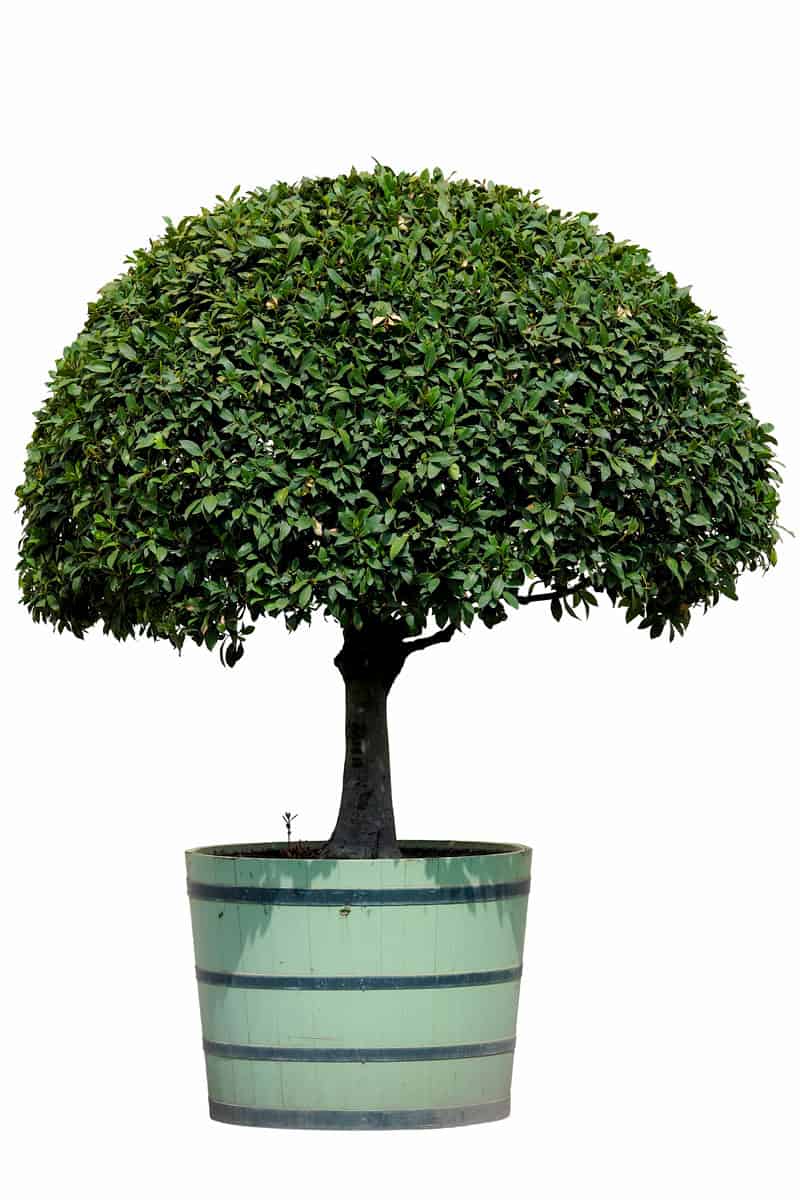
Crown lifting entails removing the lower branches of the tree crown to reduce the weight of the larger branches. Generally, you will embark on crown lifting to eliminate stems that clash with your house structure or to clear sidewalks.
Crown lifting is suitable for younger Bay trees since pruning the older ones can leave more significant dents on the tree. Additionally, over-pruning can negatively affect the tree's lower limb.
Crown Reduction
Crown reduction focuses on eliminating terminal branches to maintain the main limb. This exercise involves reducing the mass of the larger stems or cutting back on the tree's overall height.
It is better to reduce younger Bay trees than older ones. With older trees, your best bet is to remove the entire limb rather than reduce it.
Furthermore, crown reduction should be done by a person with insights into tree growth patterns to minimize the risk of decay after trimming. If the specialist does it well, your tree will keep growing and remain healthy.
When to Prune the Bay Tree
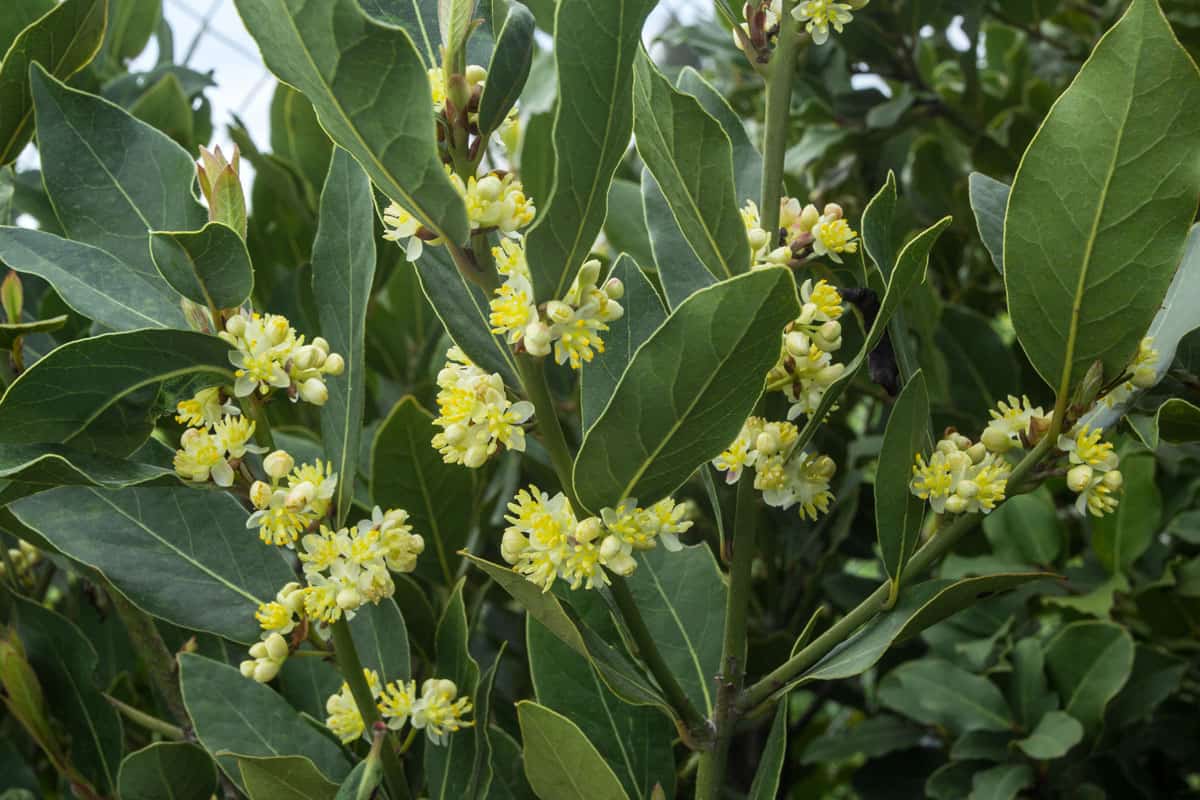
The harsh winter weather can adversely affect your Bay tree, resulting in sick or dead branches. Thus, it is ideal to begin pruning the Bay tree in late spring. You can then continue the exercise throughout the summer.
You can get in the tree's initial shaping when you begin pruning in late spring. The light pruning in summer helps to maintain the shape. This light pruning is necessary since the Bay tree grows more vigorously and develops a lot of new growth in the summer.
Avoid pruning your tree after summer since this can cause it to become dormant and fail to produce new foliage.
How Do You Care for a Bay Tree in the Winter?
The Bay tree is native to the Mediterranean area. In these areas, the prevailing winter weather is cool, not cold. For this reason, it is typical to container-grow the Bay tree in cold climates.
This arrangement allows you to grow your plant outside over the summer and bring it indoors during the harsh winter conditions.
Please do the following to care for your Bay tree and keep it healthy through the winter.
Choose a Strategic Position
Place the potted tree near a sunny window to ensure that the tree gets sufficient sunlight. Plants need sunlight for photosynthesis, the process by which they make food, ultimately enabling survival.
Also, avoid exposing the tree to heat and drafts from your HVAC system.
Enhance Drainage
Ensure that you use well-draining soil in your plant pot to keep the roots from standing in water. These trees require minimal water to thrive. Therefore, the excess moisture causes the roots to rot.
It is best to water the tree sparingly during winter since little evaporation occurs. However, you should regularly inspect the soil to ensure it does not dry completely. The tree needs water to survive as the water dissolves the essential elements and enables them to move to the stems, branches, and leaves.
Increase Humidity Levels
Cold air contains little humidity. But the low humidity levels in your home can cause the Bay tree to dry out.
If the tree begins to drop leaves, mist it regularly to raise humidity levels. Alternatively, you can install a humidifier which would also serve to increase indoor humidity levels.
This humidifier is easy to clean and refill. See it on Amazon.
Don't Fertilize the Tree
Bay trees may require fertilizers during the growing seasons in the spring and summer. However, the tree is semi-dormant during winter. Therefore, it is not advisable to fertilize the tree during winter because it would encourage growth and make the tree vulnerable to infestation by pests such as aphids.
How Do You Treat Yellow Leaves on a Bay Tree?

Bay tree leaves have a shiny green top and a paler green aside. Therefore, yellow leaves indicate something is wrong with your Bay tree. You can do the following to resolve the problem.
Transplant the Bay Tree
Overwatering your Bay tree can result in its leaves becoming yellow. To determine if overwatering is the cause of yellow leaves, check the roots. If they are black and mushy, then they are rotting.
It is not easy to resolve root rot. But you can try to eliminate the infected roots and then transplant the tree. Re-plant the tree in well-draining soil to avoid creating a repeat problem. Also, check your watering schedule to ensure you do not overwater the tree again.
Practice Organic Pest Control
The leaves of your Bay tree can start to yellow if a Bay sucker attacks it. Therefore, inspect the underside of the Bay tree leaves for pests or eggs. Although the Bay sucker does not kill your tree, it can cause its health to deteriorate.
Encouraging vast biodiversity in your garden will help control infestation. So, provide a habitat that attracts predatory insects like ground beetles and ladybirds to keep the Bay sucker numbers down.
You can also remove the infected stems and leaves and treat the remaining stems and leaves with insecticidal soap. Additionally, regularly check the tree to ascertain that you got rid of all the pests.
This insecticidal soap is suitable for indoor, outdoor, or greenhouse use. See it on Amazon.
Feed the Tree
Nutrient deficiencies in the soil can also result in yellow leaves. If the soil is too alkaline, the leaves turn yellow at the edges while the veins remain green. But low nitrogen levels will cause uniform yellowing of the leaves.
Use peat moss or sulfur to correct the pH imbalance. Alternatively, add organic compost or nourish the soil with nitrogen-rich fertilizer to raise the soil's nitrogen levels.
Wrapping Up
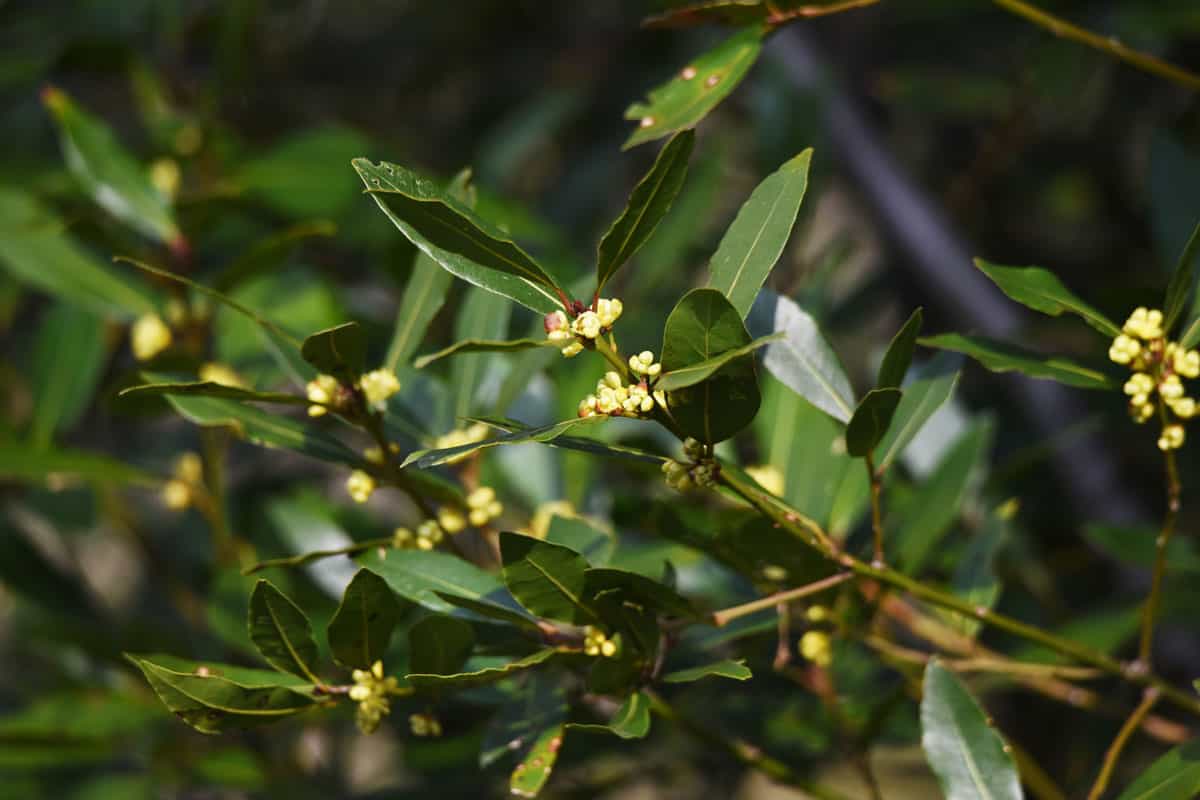
Establish a regular pruning schedule to control your Bay tree's growth. Although the tree can grow to about 60 feet when mature, trimming it will allow you to maintain it at 4 to 6 feet.
Further, ensure that you plant the tree in well-draining soil and expose it to sufficient sunlight to keep it healthy and thriving.
These articles may pique your interest:
10 Ground Cover Plants That Choke Out Weeds
How To Get Rid Of Black Aphids [A Complete Guide]


